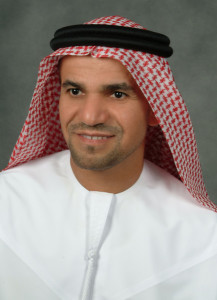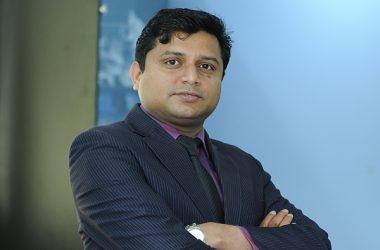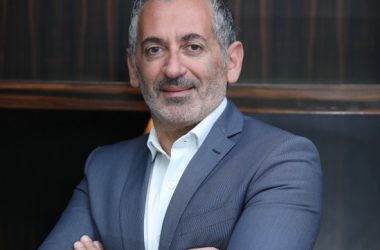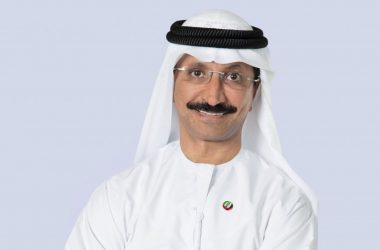 Security and trust are essential in communication terms, especially when it comes to government business. Dr Saeed Al Dhaheri, Advisor, Information Systems, United Arab Emirates Ministry of Foreign Affairs, was all too aware of the need to modernise his department’s communications channels, and embarked on an eight month implementation of a secure global data network (WAN) in February 2012, that placed these concepts at the fore of his strategy.
Security and trust are essential in communication terms, especially when it comes to government business. Dr Saeed Al Dhaheri, Advisor, Information Systems, United Arab Emirates Ministry of Foreign Affairs, was all too aware of the need to modernise his department’s communications channels, and embarked on an eight month implementation of a secure global data network (WAN) in February 2012, that placed these concepts at the fore of his strategy.
MoFA set out with the aim of implementing the WAN in its head office in Abu Dhabi, and across 72 UAE embassies abroad—including those in the US, China and Japan—as well as a 24/7 centralised service desk that would continuously support it. Achieving secure voice, video and data communication was the goal, with the subsequent effect of reduced operational costs a welcome bonus.
A key part of the project was the implementation of a LAN in each mission, and to install desktop PCs connected with IP phones and a setup of video conference equipment at each site.
“The decision to implement the WAN was a gradual one,” Al Dhaheri says. “There was no secure communication channel for MOFA, so there was a necessity for it in the UAE. It was a dominant trend in advanced European MOFAs, and it has enabled us to reduce operational costs, and conduct secure diplomatic business.”
Before beginning the implementation, Al Dhaheri and his team visited some of Europe’s MoFAs to gain insights into SLAs on similar projects. Following the trip, MoFA opted to partner with local telecom operators Etisalat for the WAN. As part of the vendor evaluation process, a proof of concept was run for two weeks connecting various identified embassies.
The infrastructure that has been implemented provides encrypted communication over a hybrid mix between MPLS and satellite communication (V-SAT). The Cisco IP telephony network of MoFA was extended to the embassies so that each remote embassy site was considered an extension of the head office network, eliminating the high-cost of long distance calling charges.
V-SAT was used in 16 countries; in those with weaker land communication infrastructure, while MPLS was used in countries with stronger telecom infrastructure. Bandwidth connections were chosen between 1-2 Mbps depending on the embassy connectivity needs with the head office, and are scalable as future needs change.
The implementation achieved its first major goal—to slash the cost of international calls to other UAE embassies by 50 percent. Since the project became operational in October 2012, over 5,000 calls have been made on the IP-based telephony component of the project, and this has saved MoFA over $240,000. It has eliminated the need for legacy encrypted fax systems that were used to transmit confidential information, and now uses the secure and encrypted email on the Global WAN network, which has resulted in a saving of around $70,000 per year. Furthermore, the video conference component of the project has evolved the way MoFA conducts its business with other embassies. Having experienced 600 sessions since it was introduced in October 2012, the VC system has saved over $50,000, and 3-5 business days in travel time per conference.
Once the global WAN network infrastructure had entered the second phase of operation, it provided embassies access to MoFA’s intranet portal and hosted core applications, such as its correspondence management system which is now active across 69 embassies. This has provided direct electronic correspondence between the ministry and its embassies, resulting in a faster and more secure information exchange. This in turn has eliminated the need to carry official correspondences through diplomatic pouches, which usually takes a week to be transferred between MoFA HQ and embassies around the globe. “This business enablement increases the productivity of staff who communicate officially with the ministry and internal departments,” Al Dhaheri says. “The embassies now are considered as ‘departments’ of the ministry and all are on the same network having access to the resources on the Internal MoFA network.”
Although the project has already reaped financial rewards, the peace of mind it gives Al Dhaheri—and the UAE—in terms of security and trust offers a vivid reminder that his team’s work has been hugely valuable. Al Dhaheri believes security was a paramount concern in the project, “Although we may never be able to directly measure it, insuring that the security and reputation of the UAE isn’t compromised is absolutely essential,” he says. “Allowing our delegates to communicate via secure channels is a step forward for MoFA and for our government.”
Only three of the 72 stations that Al Dhaheri set out to connect are not part of the network. Political unrest in Syria has stunted the implementation there, and two other sites have recently changed location and are awaiting integration.
This year Al Dhaheri has been the recipient of a CNME CIO 50 award, and the IDC Insight CIO award for Business Enablement for his work on the project.
Looking ahead, Al Dhaheri sees the move into mobility as the next step for the WAN. MoFA is looking to build iOS and Android apps for it, and aims to have this completed by late 2014. “Our diplomats are always on the move, and the ability to interact with any mission, anywhere, will be a vital addition,” Al Dhaheri says. “Allowing staff to communicate with our missions from anywhere is a necessity nowadays. The move into mobility will serve as a catalyst for our move into a fully virtualised environment, and the private cloud that we will employ to easily manage our infrastructure.”





